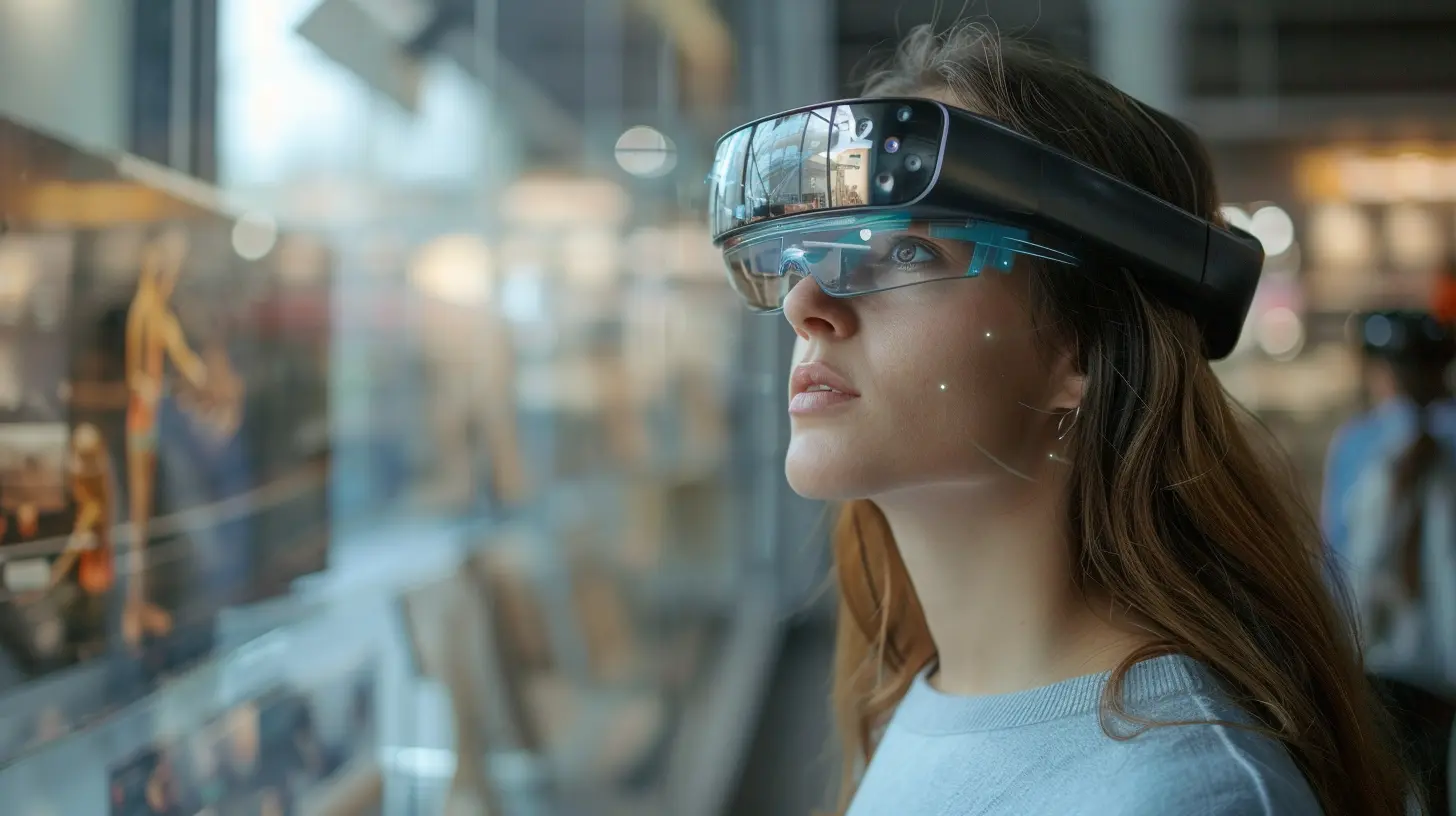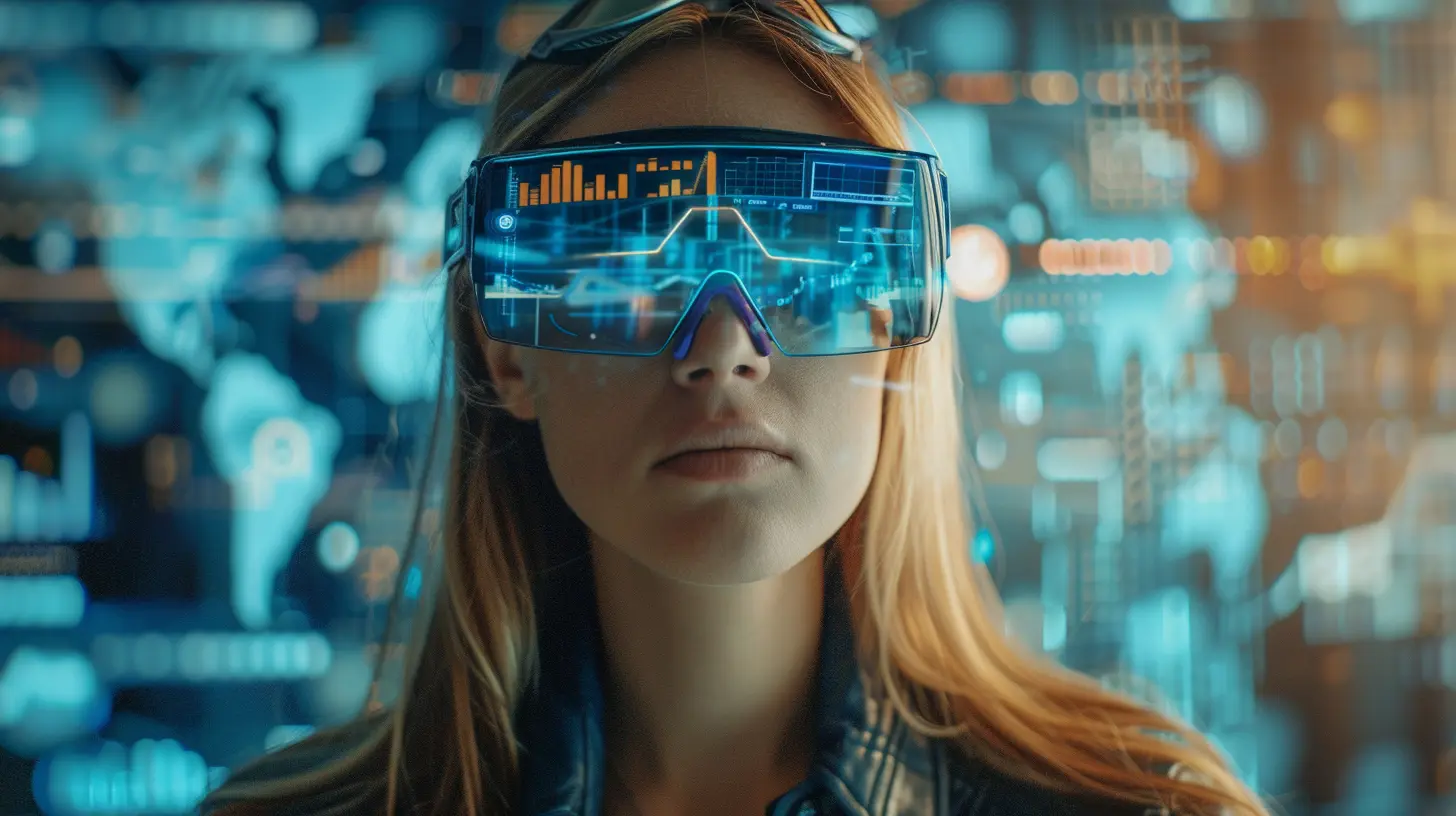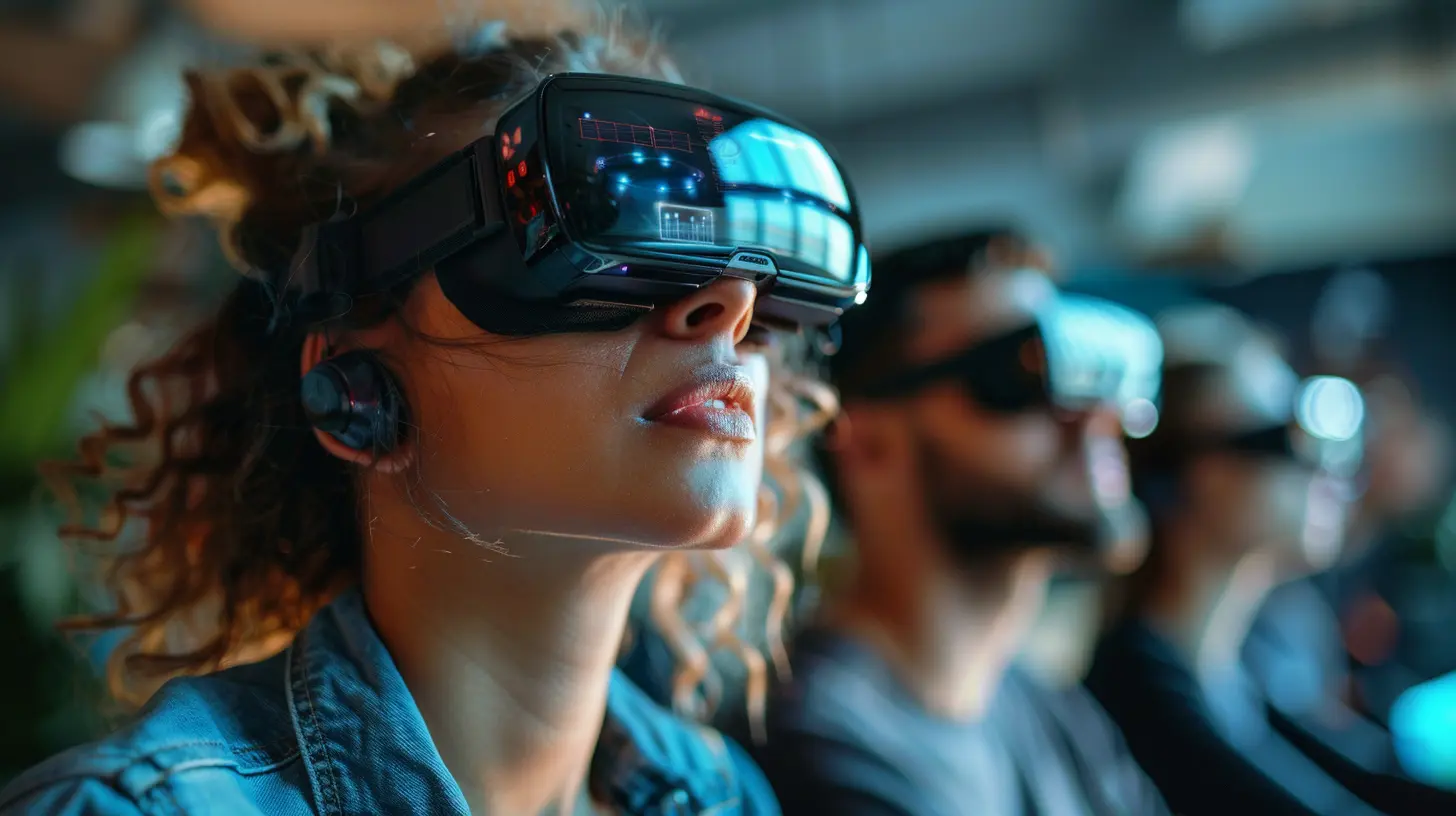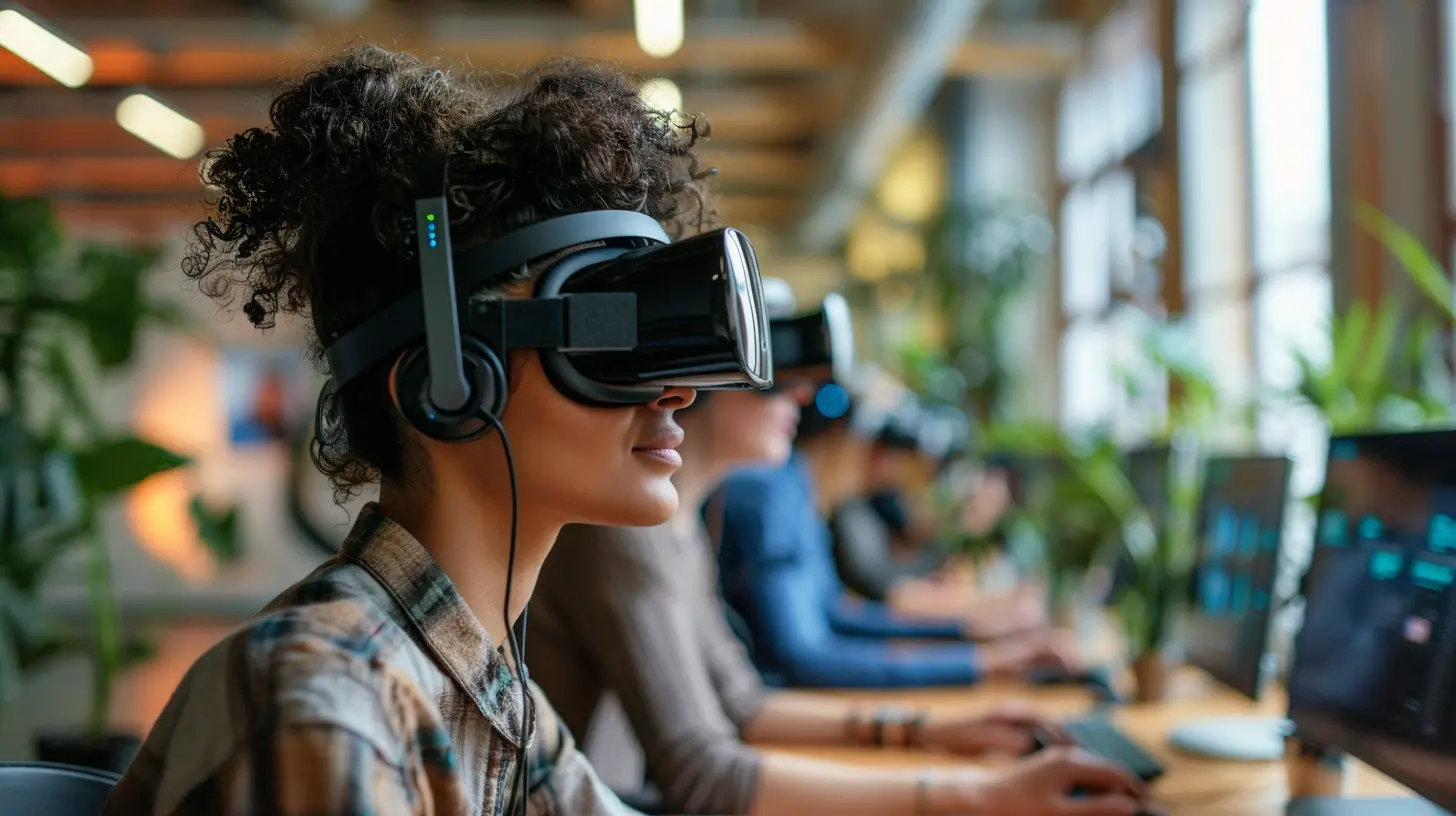How AR is Merging Physical and Digital Spaces in the Workplace
16 October 2025
Augmented Reality (AR) is transforming how we work, bridging the gap between physical and digital environments like never before. What once seemed like science fiction is now a reality—enhancing collaboration, streamlining workflows, and improving efficiency across industries. But how exactly is AR revolutionizing the modern workplace, and what does this mean for the future of work? Let’s dive in.

Understanding AR in the Workplace
AR overlays digital objects onto the real world using devices like smartphones, tablets, or AR glasses. Unlike Virtual Reality (VR), which immerses users in a completely digital environment, AR enhances the physical world by integrating virtual elements that interact with real-world spaces.Think of it as a digital assistant that provides real-time information, visual guidance, and interactive experiences—all without removing employees from their physical surroundings. This technology is evolving rapidly and is being adopted across various industries, from manufacturing and healthcare to corporate offices and remote collaboration.

How AR is Reshaping the Workplace
1. Enhanced Training and Onboarding
Traditional employee training often involves reading manuals, attending lectures, or sitting through lengthy online courses. AR is changing that by offering interactive, hands-on training experiences.- Interactive Learning – New employees can receive step-by-step guidance through AR overlays, helping them quickly get familiar with equipment, processes, or workplace layouts. This speeds up the learning process and reduces errors.
- Real-Time Assistance – Imagine a technician repairing a complex machine with AR glasses displaying instructions in their field of view, eliminating the need to flip through a manual or look up information on a separate screen.
Companies like Boeing and Siemens have already integrated AR training programs, leading to increased efficiency and reduced onboarding time for new employees.
2. Improving Remote Collaboration
With remote and hybrid work models becoming the norm, AR is playing a crucial role in keeping teams connected.- Virtual Meetings in Physical Spaces – Instead of conventional video calls, AR allows remote employees to appear as holograms in shared workspaces. This fosters a sense of presence and engagement that video conferencing often lacks.
- Real-Time Annotations – Engineers, architects, or designers can annotate physical objects in real time, allowing remote colleagues to see modifications or suggestions instantly.
Companies like Microsoft, with its HoloLens technology, and Meta’s AR-driven workplace solutions are paving the way for more immersive remote collaboration experiences.
3. Boosting Productivity and Efficiency
AR isn't just about making work more interactive—it directly impacts productivity and efficiency.- Smart AR Workspaces – Employees can access real-time data, analyze reports, and interact with digital dashboards overlaid onto their physical environment. Instead of toggling between screens, critical information is available right where they need it.
- Warehouse and Logistics Optimization – AR-guided picking systems help warehouse workers locate and retrieve items faster, reducing errors and speeding up order fulfillment. Amazon and DHL have successfully implemented AR-based logistics solutions, significantly improving efficiency.
4. Enhancing Customer Support and Maintenance
Customer service and technical support are becoming more seamless with AR technology.- Remote Troubleshooting – Instead of explaining issues over the phone, customers can use AR-enabled apps to show support technicians the problem in real time. Technicians can then guide them through fixes with AR overlays, reducing downtime and frustration.
- AR-Assisted Maintenance – Field service technicians can access hands-free AR instructions while repairing equipment, eliminating the need for bulky manuals and reducing errors.
This has been particularly impactful in industries like IT support, automotive repair, and home appliance servicing.
5. Redefining Office Spaces with AR
The modern office is evolving, and AR is playing a huge role in shaping how we interact with work environments.- Virtual Desks and Interfaces – Instead of traditional monitors, AR can project interactive workspaces onto any surface, allowing employees to customize their digital workspace on the go.
- Hot Desking & Space Management – Employees can use AR apps to locate available desks, meeting rooms, or coworkers within an office, making shared workspaces more efficient.
6. AR in Design, Engineering, and Manufacturing
For industries that rely heavily on design and prototyping, AR is a game-changer.- 3D Visualization – Engineers and designers can superimpose 3D models onto real-world surfaces, allowing them to test prototypes without needing physical mockups.
- Collaborative Product Development – Teams can make real-time adjustments to digital models, reducing the time and cost of physical iterations.
Companies like Ford and Airbus are already leveraging AR in product development, leading to faster innovation cycles.

Challenges and Limitations of AR in the Workplace
Despite its promising future, AR still faces some hurdles:- Hardware Costs – High-quality AR devices like HoloLens and Magic Leap can be expensive, limiting widespread adoption.
- User Adoption – Employees might resist adapting to AR if they're accustomed to traditional workflows. Proper training and gradual adoption are key.
- Privacy and Security Risks – As AR integrates with workplace environments, data security and privacy concerns become more significant, especially with AR-enabled tracking and recording features.
However, as technology advances and hardware becomes more affordable, many of these challenges will likely diminish.

The Future of AR in the Workplace
AR is not just a passing trend—it’s a transformative force that will continue redefining how businesses operate. As AR hardware becomes more accessible and software innovations streamline its functionality, we can expect:- More widespread adoption across industries.
- Seamless integration with Artificial Intelligence (AI) for smarter, adaptive AR experiences.
- Lighter, more affordable AR wearables.
- Greater emphasis on privacy and security enhancements.
In the next decade, AR may become as common in workplaces as computers and smartphones are today. Whether you're in manufacturing, healthcare, retail, or an office setting, AR is set to revolutionize your workspace, making tasks more efficient, interactive, and engaging.
Final Thoughts
The workplace is no longer confined to desks and traditional tools. With AR merging physical and digital spaces, the way we work is becoming more intuitive and immersive. While challenges remain, the potential for increased efficiency, collaboration, and innovation is undeniable.So, is your workplace ready to embrace AR? It might just be the tool that takes your business into the future.
all images in this post were generated using AI tools
Category:
Augmented RealityAuthor:

Gabriel Sullivan
Discussion
rate this article
1 comments
Upton Pacheco
This article brilliantly explores how augmented reality is transforming workplaces by seamlessly blending physical and digital environments. The potential for enhanced collaboration and productivity is immense, as AR technologies pave the way for innovative solutions in daily operations.
October 26, 2025 at 3:09 AM

Gabriel Sullivan
Thank you for your insightful comment! I'm glad you found the article highlights the transformative potential of AR in enhancing collaboration and productivity in the workplace.


